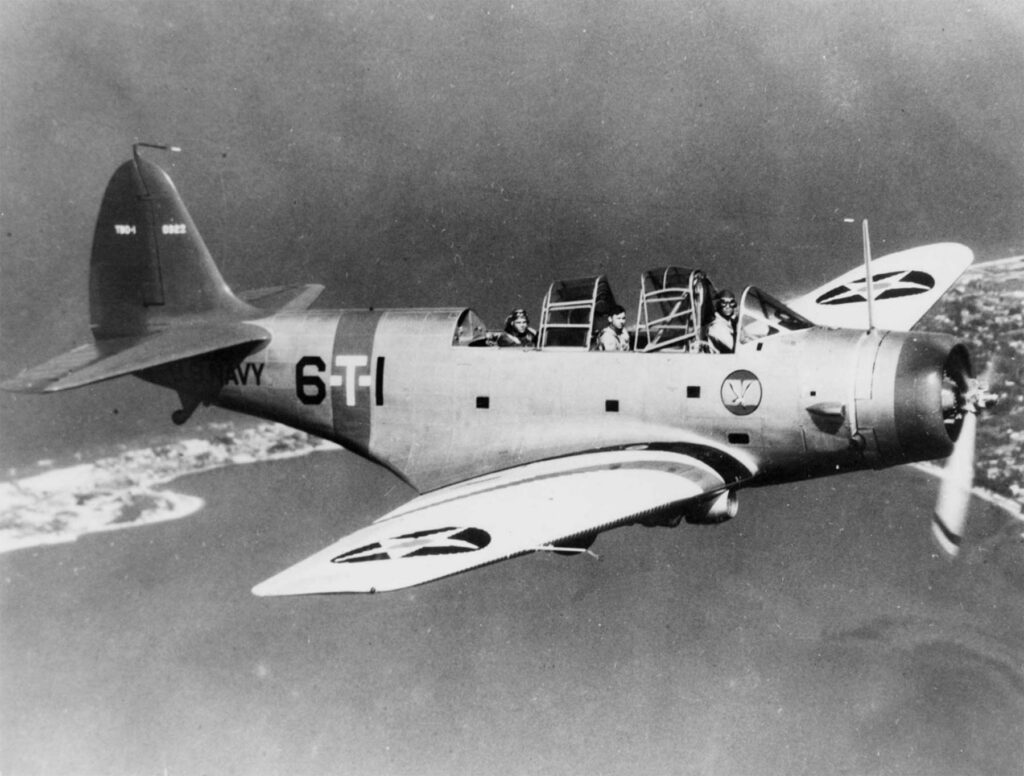The Douglas TBD Devastator, an early US Navy torpedo bomber, was notable for its monoplane design, retractable landing gear, and radio-guidance capabilities.
This article provides an in-depth look at the Douglas TBD Devastator, a pioneering American torpedo bomber of the 1930s and early World War II. We explore its development, highlighting the strategic needs and technological context of its era. The design section covers its specifications, advantages, and limitations. We assess its performance, comparing it with contemporary aircraft in terms of engine power, speed, and operational range. The military use section delves into its combat history, operational roles, and eventual replacement. The conclusion reflects on the Devastator’s historical significance and the lessons learned from its service.
The Douglas TBD Devastator was a significant early example of a naval torpedo bomber in the United States Navy. Introduced in the 1930s, it represented a leap forward in naval aviation but quickly became outdated as World War II progressed.
History of the Development of the Douglas TBD Devastator:
In the interwar period, the United States Navy sought to modernize its air capabilities, particularly in the field of aerial torpedo warfare. This need led to the development of the TBD Devastator, designed by the Douglas Aircraft Company. The program was initiated in the early 1930s, driven by the Navy’s desire for a fast, modern aircraft capable of delivering torpedoes effectively.
The Devastator was a product of its time, embodying the transitional phase of naval aviation from biplanes to more advanced monoplanes. It first flew on April 15, 1935, showcasing its advanced features like retractable landing gear and a modern, all-metal design.
The development of the TBD was part of a broader naval strategy that emphasized the use of air power in maritime warfare. This strategy foresaw the use of aircraft carriers and their air wings as pivotal elements in controlling sea lanes and projecting power.
Design of the Douglas TBD Devastator:
The TBD Devastator was a notable design for several reasons. Measuring approximately 35 feet in length (10.7 meters) with a wingspan of 50 feet (15.2 meters), it was among the first all-metal monoplane designs adopted by the US Navy. The aircraft could accommodate a crew of three: a pilot, a bombardier, and a rear gunner.
Powered by a Pratt & Whitney R-1830 Twin Wasp radial engine, it generated around 900 horsepower (670 kW). The design included a semi-retractable torpedo cradle, which allowed the aircraft to carry a torpedo externally while maintaining a relatively aerodynamic profile.
However, the TBD’s design also had significant drawbacks. While innovative for its time, it quickly became obsolete as aircraft technology advanced rapidly in the late 1930s and early 1940s. The aircraft’s speed, armament, and armor were all inferior compared to newer models that emerged as World War II progressed.

Performance of the Douglas TBD Devastator:
In terms of performance, the TBD Devastator was initially competitive. It could reach speeds up to 206 mph (332 km/h) and had a range of about 435 miles (700 kilometers). However, these figures were quickly surpassed by newer aircraft.
When compared to its contemporaries, like the Japanese Nakajima B5N, the TBD was slower and less maneuverable. Its operational ceiling of around 19,700 feet (6,000 meters) was adequate for its time but soon proved insufficient in the face of advancing enemy technology.
Military Use and Combat of the Douglas TBD Devastator:
The TBD Devastator’s primary armament was a single torpedo or, alternatively, a bomb load for bombing missions. It saw extensive use in the early stages of World War II, including the pivotal Battle of Midway in 1942.
In combat, the Devastator’s limitations became painfully evident. It suffered heavy losses against more advanced Japanese fighters due to its inferior speed and maneuverability. The aircraft was not sold to other countries and was quickly replaced in service by more capable aircraft like the Grumman TBF Avenger.
The Devastator was retired from frontline service by 1942, marking the end of its short but significant operational history.
The Douglas TBD Devastator’s legacy lies in its role as a stepping stone in naval aviation history. While it was quickly overshadowed by newer aircraft, its early use demonstrated the potential and challenges of naval air power, particularly in the field of torpedo bombing. The lessons learned from the Devastator’s service were crucial in the development of more effective naval aircraft, shaping the future of aerial warfare in the maritime domain.
Back to the Bombers section.